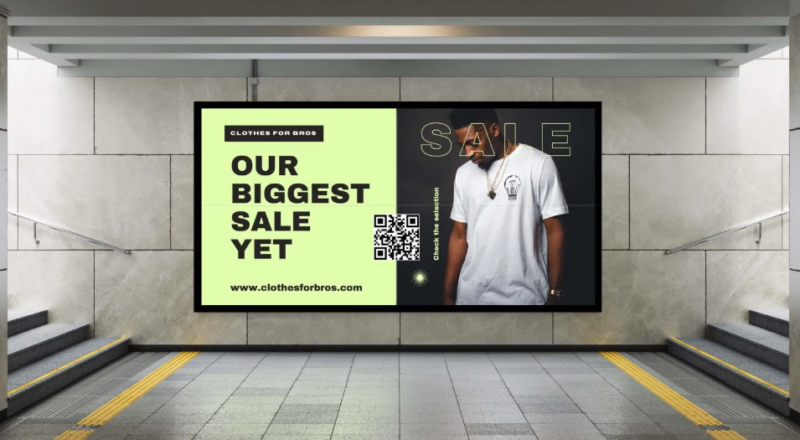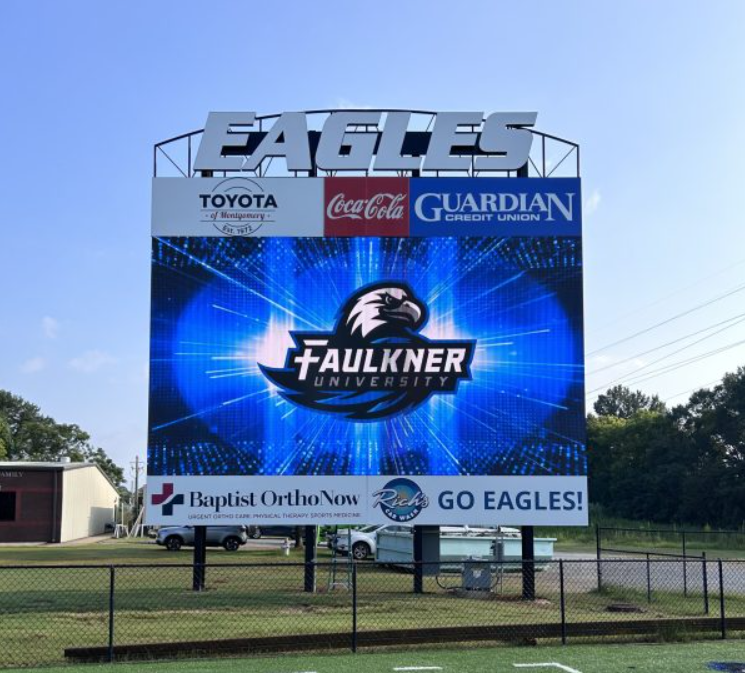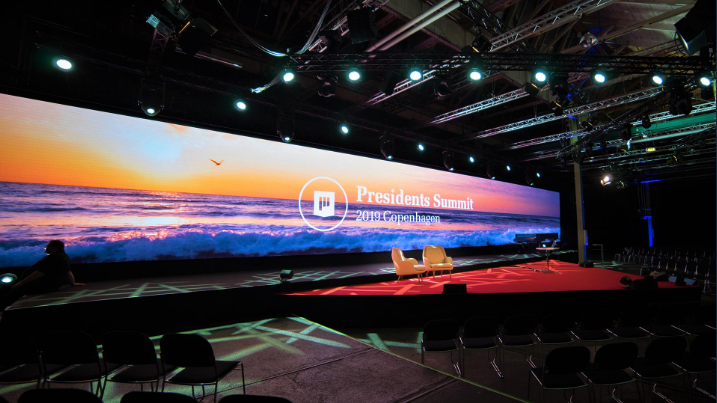In this article:
- Understanding Nontraditional Media
- 6 Key Design Considerations for Nontraditional Media
- Challenges in Nontraditional Design
- Best Practices for Designers
- Designing Beyond the Screen
As technology evolves, so does graphic design. The field is expanding beyond traditional screens and static formats to nontraditional media. These platforms offer exciting opportunities for creativity but present challenges that require you to reconsider your approach.
When designing for various screens, you must have some key considerations in mind to ensure clarity, creativity and functionality.
Understanding Nontraditional Media
You likely gravitate toward traditional formats like print materials and standard digital screens when considering graphic design. However, new areas of opportunity are now available due to rapidly evolving technology, and you may be expanding your skills to nontraditional media.
These platforms move beyond the familiar boundaries of paper or desktop screens and require a fresh design approach, whether for a VR headset, sprawling LED billboards or an interactive kiosk.
Having spent most of my time creating website visuals, I assumed an LED display would be as straightforward. I thought all it would take was making the design bigger. However, designing for a massive LED screen meant I had to rethink everything.
Each platform comes with its own set of design considerations. For instance, a smartwatch has limited space, demanding clean and simple visuals to improve user experience, but still delivers value at a glance.
Instances like these require you to step outside your comfort zone, approaching each project with an understanding of the platform’s demands. This pushes you to be adaptable and innovative when designing for different contexts, environments and user experiences — and that is what makes it so exciting.

Get 300+ Fonts for FREE
Enter your email to download our 100% free "Font Lover's Bundle". For commercial & personal use. No royalties. No fees. No attribution. 100% free to use anywhere.
6 Key Design Considerations for Nontraditional Media
When designing for nontraditional media, you should know that each medium has its own quirks. Therefore, you must consider how your design will work in the real world. Here are the key things to remember to make your designs eye-catching and effective.
1. Scale and Resolution
A standard laptop or mobile screen has predictable dimensions and pixel densities in design. Nontraditional platforms can vary wildly in size, aspect ratio and resolution. A crisp and balanced design on one medium could appear pixelated or stretched on another.
For instance, digital signage follows a standard 16:9 aspect ratio, but the physical size can range from a small screen at a retail checkout to massive outdoor installations spanning buildings. While the aspect ratio remains consistent, the viewing experience does not. Therefore, designs must account for close-up and far-away perspectives. The text needs to be large and legible, and graphics should avoid fine details that may blur at scale.

Source: https://www.lamasatech.com/blog/digital-signage-best-practices/
Resolution also becomes challenging with digital displays, which often have lower pixel density than smaller screens. If you were to design for a billboard, elements like gradients or small text may render poorly. Instead, bold shapes and strong lines ensure clarity.
2. Color and Contrast
Color and contrast affect how your audience perceives designs across nontraditional media. Platforms like LED displays or VR environments often have unique technical limitations or environmental factors that impact color rendering.
For example, LED screens use three primary colors — red, green and blue (RGB) — to produce various hues. While this seems straightforward, the reality can be more complex. LED billboards need shades that stand out in direct sunlight and remain vibrant at night. High contrast is key here — subtle color shifts or intricate gradients can easily become lost, leaving your design looking muddy from a distance.
In contrast, a smartwatch screen is all about clarity and energy efficiency. As a designer, you must stick to high-contrast color schemes, as darker backgrounds and bright elements conserve battery life while improving readability. Overly bright or saturated visuals can cause eyestrain, while poorly balanced contrasts may make important information harder to notice.
When designing for these platforms, test your color choices under real-world conditions. What looks great on your monitor could behave differently on an outdoor digital display. The goal is to balance visual impact with usability, ensuring your design is clear, engaging and accessible.
3. Context and Environment
Context and environment are everything when designing for nontraditional media. With traditional screens, users typically engage in controlled environments. Nontraditional platforms are different because they demand designs to perform in unpredictable or changing settings.
Say you are designing for an HD screen at a college campus. You would need your design to compete with bright lighting and distractions like passing cars and large crowds. Bright, bold colors with high contrast are essential to ensure visibility. Simultaneously, your message needs to be clear and quick to digest for passersby.

Source: https://boostrdisplays.com/faulkner-university/
The bottom line is always to consider where and how the user will experience your design. Ask yourself if they will be on the move or stationary. Will they be outdoors or inside? Tailoring your designs to the specific context and environment ensures they are functional and engaging.
4. User Experience and Interaction
Designing for nontraditional media is more than about creating visually appealing graphics — it is also about crafting intuitive and engaging experiences. Nontraditional platforms often invite people to interact with the design. This makes understanding the user’s journey and expectations a critical part of the process.
Consider interactive kiosks in shopping malls or airports. These systems rely on touch-based navigation, guiding users to find information, products or services. The experience needs to be quick, seamless and personalized to leave a positive impression.
About 80% of consumers are more likely to do business with companies that offer a personalized experience. For a kiosk, this could mean remembering a returning user’s preferences or providing content tailored to location or time. Ultimately, the goal is to make the interaction as effortless and satisfying as possible.
5. Typography and Readability
Typography is foundational to graphic design but demands even greater attention to detail in nontraditional media. These types of platforms often need quick readability in less-than-ideal conditions. Whether it is a massive billboard or an interactive display, the typeface must be clear to make it approachable and purposeful.
Take presentation screens at live events as an example. Large audiences often view them from varying distances, meaning your typography needs to be large and incredibly clean. Therefore, decorative fonts or thin strokes are out of the question, as they quickly lose clarity when scaled up or viewed from far away. Pairing a strong sans-serif font with ample line spacing ensures the content remains readable from the back of a crowded room.

Source: https://www.proshopeurope.com/en/av-rentals/meetings-conferences/led-big-screens/
Then there are VR environments, where typography integrates into a three-dimensional space. This becomes tricky because the text must be within the user’s field of view. Too much text or poorly scaled fonts can disrupt immersion or cause viewing discomfort. Strategic use of size, contrast and alignment ensures text remains readable and unobtrusive in a virtual setting.
The golden rule is that readability comes first. Your typography should deliver the message without making the user work for it.
6. Motion and Animation
You can indefinitely enhance nontraditional screens with motion and animation by adding dynamism and guiding the viewer’s attention. However, it also takes careful consideration, as motion is complex where timing, pacing and visual flow become crucial for delivering a clear, engaging experience.
For example, digital signage in retail stores often has animations like text sliding in, images fading or call-to-actions pulsing. These subtleties can grab attention without overwhelming the viewer. Motion in these spaces must be deliberate but purposeful, drawing focus to key messages or products without distracting from the overall experience.
Balance is key when designing for motion. Use it to enhance clarity and guide attention by ensuring the movement is smooth and natural. This provides a comfortable, engaging experience while also making the message clear.
Challenges in Nontraditional Design
Designing for nontraditional screens often comes with challenges that push you to think beyond the standard rules of print or digital displays, including:
- Diverse viewing conditions: Nontraditional media often exists in dynamic environments where factors like lighting, distance and motion impact visibility. Testing and refining are key to guarantee your designs work in various conditions.
- Device-specific technical constraints: Clarity and scalability are essential to ensure the work translates seamlessly across varied resolutions and aspect ratios.
- Interaction complexity: You must create intuitive and user-friendly experiences, from touch inputs to eye tracking.
- Accessibility across audiences: Designing for inclusivity is especially challenging in emerging platforms. For instance, VR and AR experiences can exclude users with mobility or visual impairments if voice commands or captions are unavailable.
- Rapidly changing technology: The tech powering nontraditional media evolves quickly, so designs that work today could become obsolete tomorrow. New platforms, hardware advancements and user expectations require you to remain flexible and continuously learn.
Best Practices for Designers
Designing for nontraditional platforms may come with challenges. However, the following best practices can help you deliver impactful and functional work across unconventional displays.
1. Understand the Medium and Its Content
Every platform has its own limitations and opportunities. Take the time to understand how the medium works and where the design will go. Ask yourself who the audience is and how they will interact with the design. Then, research the environmental conditions that could impact visibility and usability.
2. Prioritize Simplicity and Clarity
Clarity is necessary in all aspects of design, regardless of the platform. However, nontraditional media may only give users a split second to process a message or interact with a design. That is why clean layouts, bold visuals and simple typography are important to maximize readability.
3. Ensure Creativity and Functionality Go Hand in Hand
Creativity and technical execution must work together from the start. Nontraditional media often involve specialized technology, physical structures or immersive experiences that require both sides of the process to align seamlessly.
You must also factor in the technology that drives the experience, such as motion sensors, exhibit hardware and lighting conditions. A visually stunning design can fall flat if the physical display does not support the creative vision.
Designing Beyond the Screen
Designing for a different type of media may come with challenges, but it pushes you to go beyond creative boundaries and innovate with several solutions. Prioritize the top considerations to deliver experiences that make an impact.
They will give you an opportunity to create work that shines and engages an audience through visual storytelling. The future of design is immersive, dynamic and full of possibilities, so take on the challenge of designing beyond the screen.
